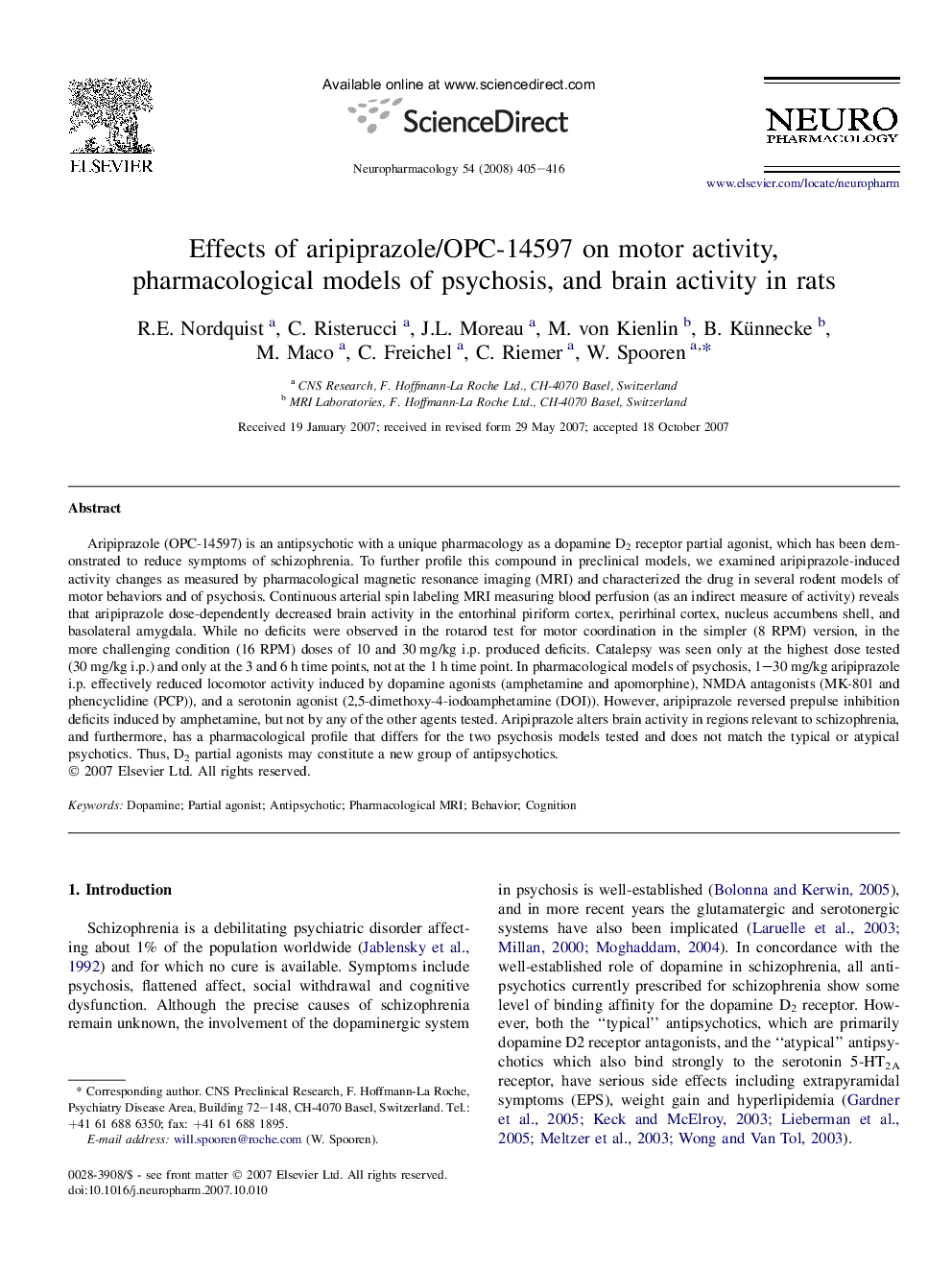| کد مقاله | کد نشریه | سال انتشار | مقاله انگلیسی | نسخه تمام متن |
|---|---|---|---|---|
| 2494562 | 1115570 | 2008 | 12 صفحه PDF | دانلود رایگان |

Aripiprazole (OPC-14597) is an antipsychotic with a unique pharmacology as a dopamine D2 receptor partial agonist, which has been demonstrated to reduce symptoms of schizophrenia. To further profile this compound in preclinical models, we examined aripiprazole-induced activity changes as measured by pharmacological magnetic resonance imaging (MRI) and characterized the drug in several rodent models of motor behaviors and of psychosis. Continuous arterial spin labeling MRI measuring blood perfusion (as an indirect measure of activity) reveals that aripiprazole dose-dependently decreased brain activity in the entorhinal piriform cortex, perirhinal cortex, nucleus accumbens shell, and basolateral amygdala. While no deficits were observed in the rotarod test for motor coordination in the simpler (8 RPM) version, in the more challenging condition (16 RPM) doses of 10 and 30 mg/kg i.p. produced deficits. Catalepsy was seen only at the highest dose tested (30 mg/kg i.p.) and only at the 3 and 6 h time points, not at the 1 h time point. In pharmacological models of psychosis, 1–30 mg/kg aripiprazole i.p. effectively reduced locomotor activity induced by dopamine agonists (amphetamine and apomorphine), NMDA antagonists (MK-801 and phencyclidine (PCP)), and a serotonin agonist (2,5-dimethoxy-4-iodoamphetamine (DOI)). However, aripiprazole reversed prepulse inhibition deficits induced by amphetamine, but not by any of the other agents tested. Aripiprazole alters brain activity in regions relevant to schizophrenia, and furthermore, has a pharmacological profile that differs for the two psychosis models tested and does not match the typical or atypical psychotics. Thus, D2 partial agonists may constitute a new group of antipsychotics.
Journal: Neuropharmacology - Volume 54, Issue 2, February 2008, Pages 405–416